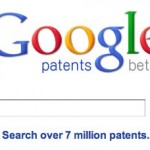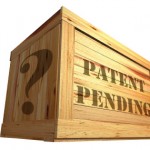In the time that the Apple vs. Samsung patent fight has been underway, we have been inundated with an untold number of articles on how Apple is stifling innovation in the SmartPhone world. (Haven't seen these: just do a Google search for "Apple stif . . ." you don't have to type any more than this--the search auto-completes itself.) I often take a contrarian view from that stated by most "expert" commentators--be they members of the press or actual patent professionals, and the Apple v. Samsung verdict is no exception: I think the result actually demonstrates that the patent system is working just fine in this instance, thank you very much. But how can this be when Samsung got hit with more than a BILLION US DOLLAR jury verdict last week?!? Doesn't the fact that Samsung could not make a product without infringing Apple's multitude of patents mean that
The Apple vs. Samsung Verdict Actually Demonstrates that Patents Do Promote Product Innovation
Google Changes the Game Again–This Time for Patent Owners and Those Who Serve Them
 Patrick Anderson of the great Gametime IP blog reported the details of Google's new prior art searching tool*. This is such important news, I thought it important to repeat it in a separate post. Patrick provides detailed instructions for how to use the Google patent searching tool, and I will not repeat that information here. This post provides commentary on why I think this is a very good development for the patent world. Google's original announcement on its blog is here. It does not appear coincidental that Google is upgrading its patent searching capabilities: in this press release from June 2010 we are informed of the partnership between Google and the USPTO to increase the amount of US patent information available to the public.
When used correctly, Google's tool can help "democratize" the patent analysis process
Patrick Anderson of the great Gametime IP blog reported the details of Google's new prior art searching tool*. This is such important news, I thought it important to repeat it in a separate post. Patrick provides detailed instructions for how to use the Google patent searching tool, and I will not repeat that information here. This post provides commentary on why I think this is a very good development for the patent world. Google's original announcement on its blog is here. It does not appear coincidental that Google is upgrading its patent searching capabilities: in this press release from June 2010 we are informed of the partnership between Google and the USPTO to increase the amount of US patent information available to the public.
When used correctly, Google's tool can help "democratize" the patent analysis process
Patents–Who Needs Them? Not Most Startup Entrepreneurs.
 A recent article in TechCrunch indicates that entrepreneurs are less likely to file patents than in the past. Nonetheless, there remain countless patent lawyers and agents who will argue convincingly that an entrepreneur must obtain a patent in order to succeed and who will take their $5-15K to file a darned good patent application that won't provide them a bit of business value in the long run. Even worse, the resources expended in the patent process robs the entrepreneur of needed cash that will allow them to gain customers, and of their most valuable asset: time. But when the only tool you have is a hammer, everything looks like a nail--which is why those still in the business of writing patent applications will continue to make their case to entrepreneurs (and investors) who lack the domain expertise to
A recent article in TechCrunch indicates that entrepreneurs are less likely to file patents than in the past. Nonetheless, there remain countless patent lawyers and agents who will argue convincingly that an entrepreneur must obtain a patent in order to succeed and who will take their $5-15K to file a darned good patent application that won't provide them a bit of business value in the long run. Even worse, the resources expended in the patent process robs the entrepreneur of needed cash that will allow them to gain customers, and of their most valuable asset: time. But when the only tool you have is a hammer, everything looks like a nail--which is why those still in the business of writing patent applications will continue to make their case to entrepreneurs (and investors) who lack the domain expertise to
How to Improve your Innovation ROI with Early Stage Patent Expertise: In Depth Management Article
This article, How to Improve your Innovation ROI with Early Stage Patent Expertise, was published in late 2010 as a pay for download article in Innovation Management Magazine. It later became free for download, and I can share it with readers in this link. I hope those responsible for creating value from IP in their organizations can find the insights in this article helpful. Here is a synopsis:
Innovation teams are often removed organizationally from a company’s patent matters. This can mean that corporate innovation processes move forward with little or no consideration of whether competitors can legally “knock off” the resulting consumer offering. Companies may then not attain expected ROI because competitors can legally copy the innovation—be it a product, technology or otherwise—without incurring legal liability. It may not always be necessary to protect innovation
This blog is back in town!
A bit more than a year of effort as a CEO of a battery charging startup has taken me away from this blog. It was, and remains, an incredible journey. As we move ever more close to commercialization of our battery charging technology, I will be posting more in the coming weeks and months (after a well-deserved vacation starting next week). We have learned much in the last year about getting a new technology to market, especially as it relates to building a team, fundraising and finding technology and licensing partners. I will likely be cross-posting on another blog site. But in the meantime, I am posting some articles on creating value from IP (this is the IP Asset Maximizer Blog after all) that readers may find interesting.
A Startup Company’s Experiences with Open Innovation-Part 2: Adventures of a Chief Frog Kisser
A Startup Company’s Experiences with Open Innovation-Part 1: Dealing with a Large Company Having Small Innovation Goals
For the past several months, I have been at the helm of Evgentech, a startup company with game-changing battery charging methodology. Our technology was developed by young men who did not come from a traditional engineering background and, even then, their discovery was a serendipitous result of the co-founders’ recognition of a new principle stemming from investigations initially directed toward something wholly different from battery charging. Put simply, Evgentech’s technology would not have been found if anyone--outsider or not--would have been looking for it. We are now bringing to market the first truly new battery charging paradigm in over 100 years. To put things in perspective, with Evgentech's technology, you will be able to charge your batteries in a fraction of the time possible with existing battery charging methodologies, which means you can charge your iPhone to "full" in as little as 20 minutes, as compared to the about 3-5
Editorial Note: Where Has This Blog Been Lately?
 Subscribers to this blog may have been wondering why posts have been few and far between lately. There's a good reason for this: I am now CEO of a startup company. You can learn more about my company, Evgentech, here. In short, our technology will allow you to charge your batteries 10x's faster than you can now--and perhaps even faster as we further develop our innovation platform. Things are moving fast and furious, which has made it difficult for me to spend the time to write blog posts on a regular basis. There is good news, however: I am experiencing first hand what it is like dealing with Open Innovation and licensing. In this regard, I look forward to continuing to post from time to time on the experiences that our company is going through, as I think
Subscribers to this blog may have been wondering why posts have been few and far between lately. There's a good reason for this: I am now CEO of a startup company. You can learn more about my company, Evgentech, here. In short, our technology will allow you to charge your batteries 10x's faster than you can now--and perhaps even faster as we further develop our innovation platform. Things are moving fast and furious, which has made it difficult for me to spend the time to write blog posts on a regular basis. There is good news, however: I am experiencing first hand what it is like dealing with Open Innovation and licensing. In this regard, I look forward to continuing to post from time to time on the experiences that our company is going through, as I think
It’s Time for Your R & D Team to Stop Inventing and Start Innovating
In a recent post on his 15 Inno blog, Open Innovation guru Stefan Lindegaard presented the ostensibly nonsensical hypothesis: R & D leaders are often a "threat" to innovation. Stefan's post resulted from an interaction he had with a senior R & D person at a mid-sized tech company, who apparently adhered to the outdated notion that he and his scientists and engineers know more about the company's business than anyone else could possibly even try to know. As a result, this R & D leader believes that they cannot maximize (or even create) value for their organization by looking outside the confines of their existing R & D infrastructure to solve the company's pressing business problems. Reading this, R & D professionals might likely think: "What's this guy smoking? How can R & D be a threat to innovation?! We're the reason this company has any innovation at all.
False Marking Lawsuits are Real Problem for Business and Make Little Sense When Applied to Expired Patents
 The threat of false marking lawsuits has garnered much attention in the IP business press in the last couple of years. Companies of all sizes have been hit with qui tam actions (that is, suits brought by an individual or company on behalf of the US government to right wrongs done to the government, not the individual) where the basis of the action is the mis-marking of a product with an incorrect or expired patent number. Like a gold rush, these lawsuits have resulted in a number of legal entrepreneurs seeking out products that are incorrectly marked--usually by identification of expired patents, which is an easy thing to find--and their bringing suit against the offending companies. Indeed, there were over 500 false marking lawsuits filed in 2010, making this cause of action seem almost like a
The threat of false marking lawsuits has garnered much attention in the IP business press in the last couple of years. Companies of all sizes have been hit with qui tam actions (that is, suits brought by an individual or company on behalf of the US government to right wrongs done to the government, not the individual) where the basis of the action is the mis-marking of a product with an incorrect or expired patent number. Like a gold rush, these lawsuits have resulted in a number of legal entrepreneurs seeking out products that are incorrectly marked--usually by identification of expired patents, which is an easy thing to find--and their bringing suit against the offending companies. Indeed, there were over 500 false marking lawsuits filed in 2010, making this cause of action seem almost like a


